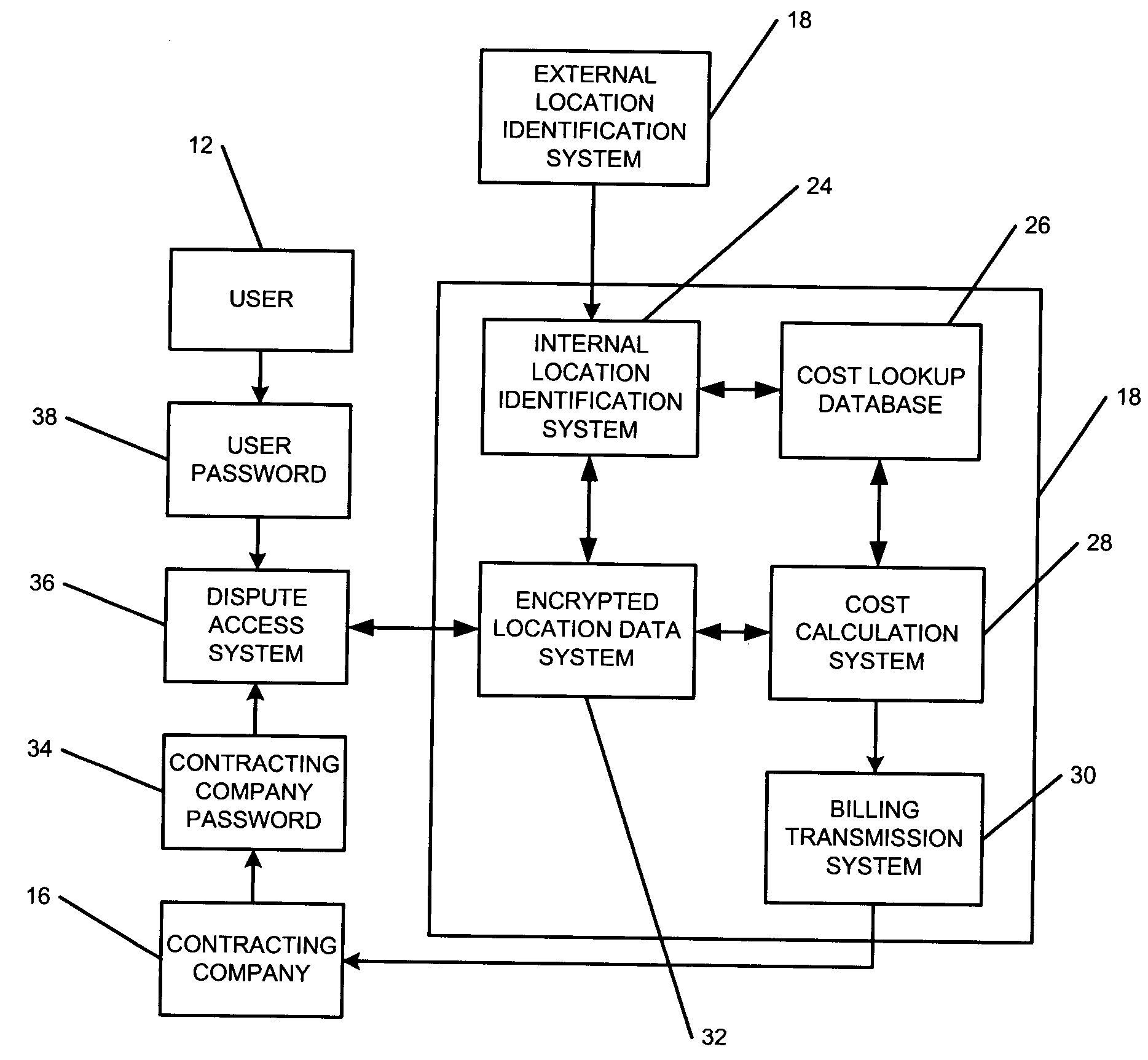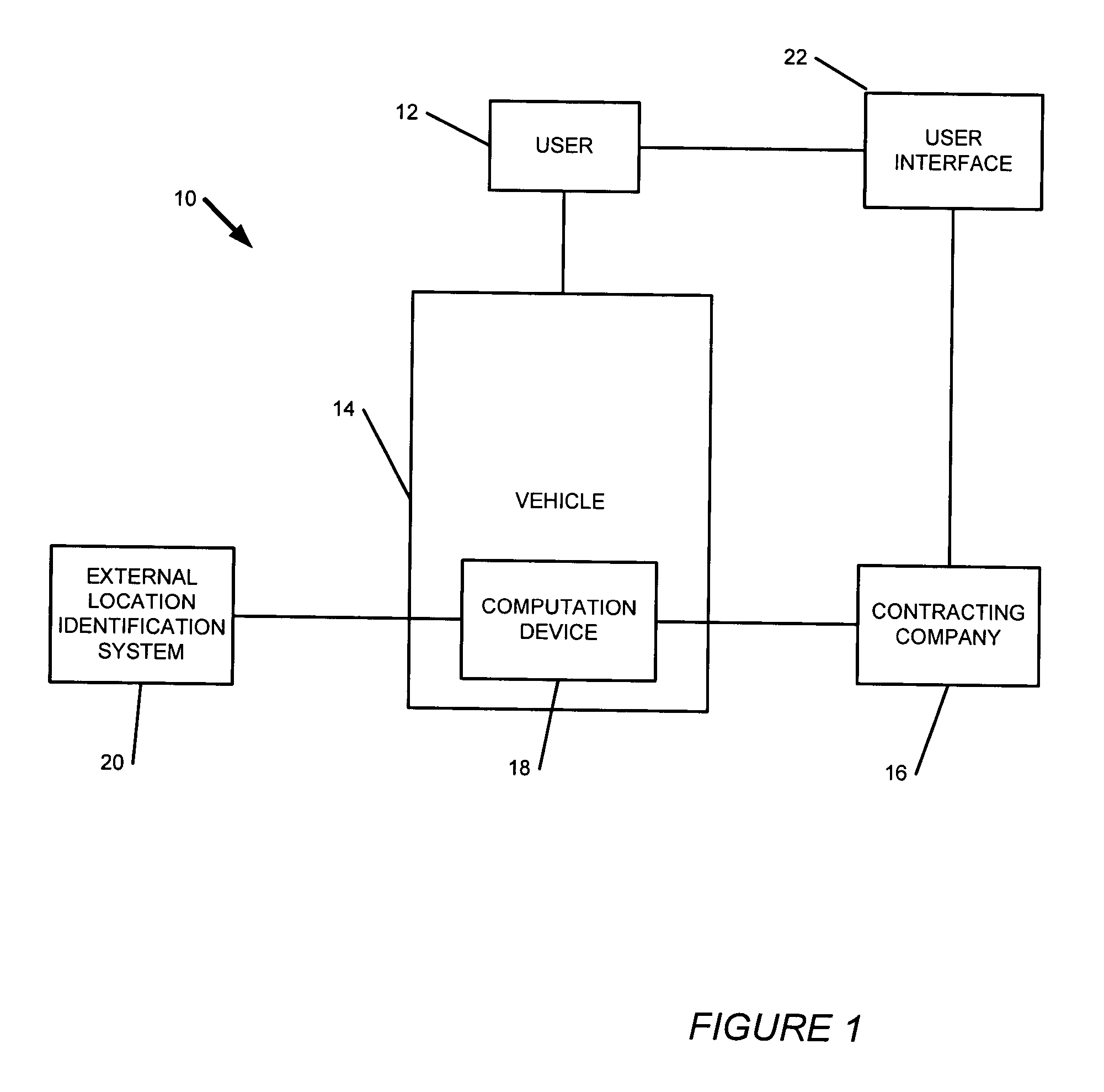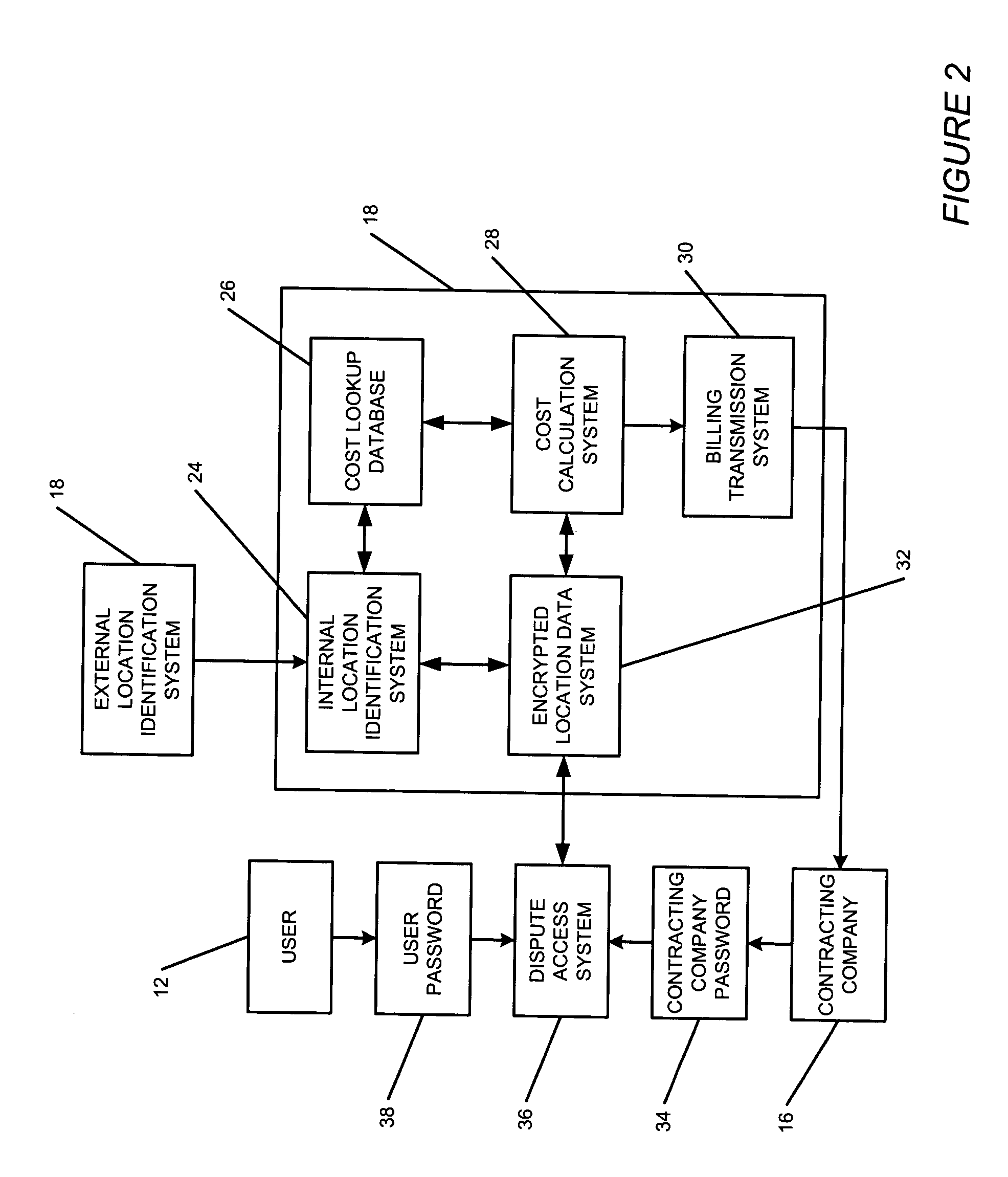System of charging for automobile insurance
- Summary
- Abstract
- Description
- Claims
- Application Information
AI Technical Summary
Benefits of technology
Problems solved by technology
Method used
Image
Examples
Embodiment Construction
[0013] The following description of the present invention is merely exemplary in nature and is in no way intended to limit the invention, its application, or uses.
[0014] With reference to FIG. 1, an insurance cost computation system is generally indicated by reference numeral 10. A user 12 operates a vehicle 14 that is either required to be covered by insurance, or for which the user has chosen to purchase insurance coverage. The user 12 contacts a contracting company 16 for example, an automobile insurance company, and elects a pay as you go insurance plan. It should be appreciated that there are many ways to implement the pay as you go insurance plan; however, the present invention, in one preferred form, involves installation of a computation device 18 in the vehicle 14. The computation device 18 may establish a communication link with the contracting company 16, and with an external location identification system 20. The computation device 18 monitors the real time location of ...
PUM
 Login to View More
Login to View More Abstract
Description
Claims
Application Information
 Login to View More
Login to View More - R&D
- Intellectual Property
- Life Sciences
- Materials
- Tech Scout
- Unparalleled Data Quality
- Higher Quality Content
- 60% Fewer Hallucinations
Browse by: Latest US Patents, China's latest patents, Technical Efficacy Thesaurus, Application Domain, Technology Topic, Popular Technical Reports.
© 2025 PatSnap. All rights reserved.Legal|Privacy policy|Modern Slavery Act Transparency Statement|Sitemap|About US| Contact US: help@patsnap.com



